Maintaining smoke alarms
Once a month
Check the indicator light
- For mains powered alarms, make sure the green light is on to confirm they are connected to mains power.
- Check the red light blinks every 40 to 60 seconds for battery operated smoke alarms to ensure the alarm has power.
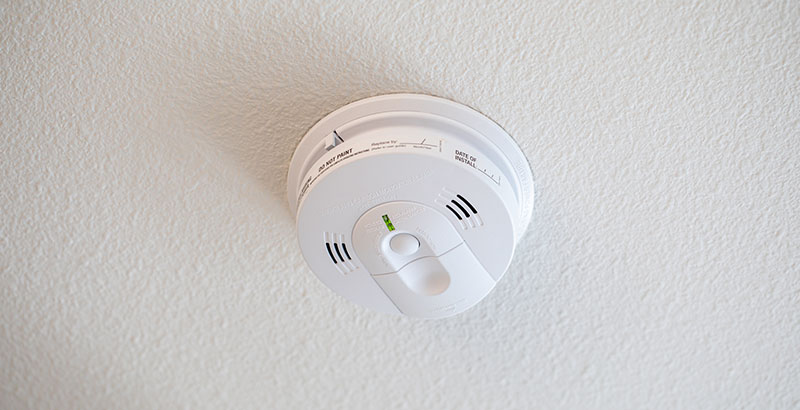
Test your smoke alarm
- Press the test button on the smoke alarm for up to 10 seconds until you hear an alarm sound. Use a broom handle if you cannot reach but be careful you do not damage the smoke alarm.
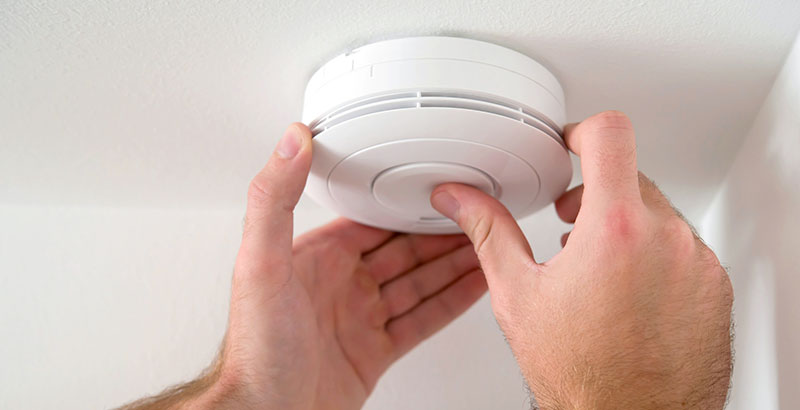
Every year
Clean your smoke alarms
- Use a vacuum cleaner with a soft brush to clean dust and cobwebs.
- Spray insect repellent on a cloth and gently wipe around the smoke alarm to keep insects out. Do not spray inside the smoke alarm.
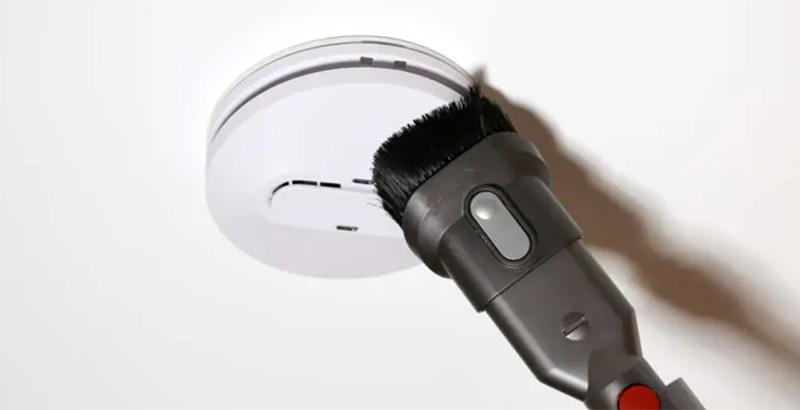
Replace smoke alarm batteries
- Replace the battery every year if your alarm uses a 9-volt alkaline battery.
- Mains powered alarms also have back-up batteries that may need replacing. If it's a 9-volt alkaline battery, make sure to change it. Check with the manufacturer if you're unsure of the battery type.
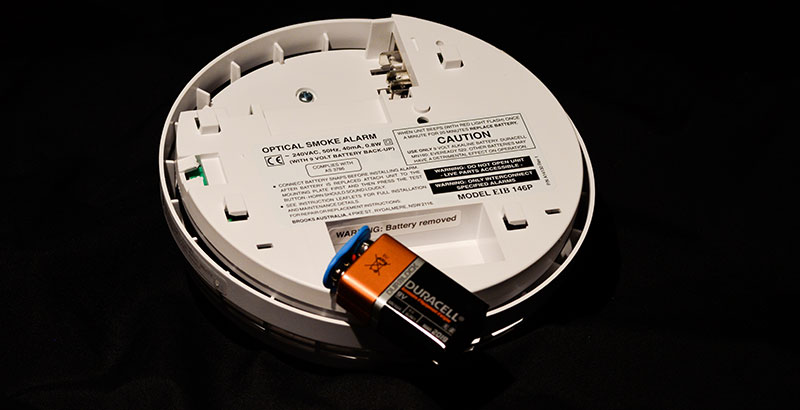
Every 10 years
Replace all smoke alarms every 10 years
- Smoke alarms do not last forever. Their sensitivity decreases over time, making them unreliable. If you have heat alarms, they need to be changed every 10 years too.
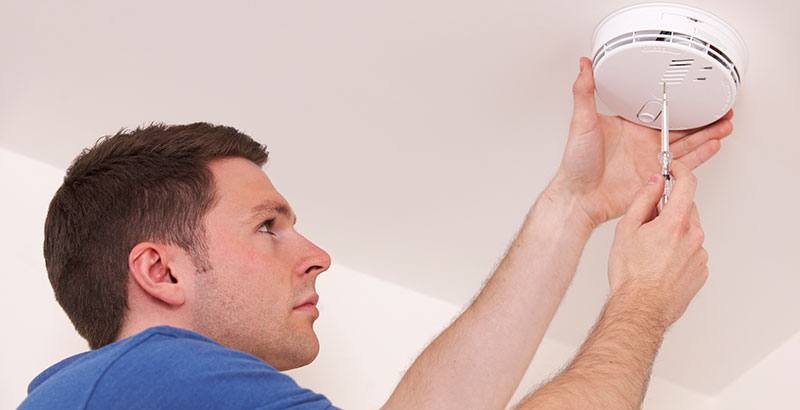
1. Identify what type of alarm you have
All smoke alarms have batteries, even those connected to mains power.
- If your smoke alarm has a 9-volt alkaline battery, replace it every year.
- Smoke alarms with a 10-year non-removable lithium battery have a warning label stating the battery should not be replaced.
- If you're unsure what type of battery your alarm uses, check with the manufacturer.
2. Turn off the mains power (for mains-powered alarms)
Turn off the mains power at your meter box (fuse box) before changing the battery in a mains-powered alarm. The green light on the alarm will go out and the red light will flash.
3. Remove the smoke alarm from its base
Smoke alarms are attached to the ceiling with a base. To remove the alarm, you may need to press a button, twist and pull, or slide it off. Check the manufacturer’s instructions if you’re unsure.
4. Replace the old battery
If you can remove the batteries, change them once a year.
5. Turn on the mains power (for mains-powered alarms)
Turn on the mains power at your meter box (fuse box). The green light on the alarm will come back on.
6. Test the smoke alarm
Press the test button on the smoke alarm until you hear the alarm sound. If you don’t hear the alarm sound, try a different battery or replace the smoke alarm.
Remember, mains powered smoke alarms must be installed and removed by a licensed electrician.
If your smoke alarm beeps or chirps, it needs maintenance or replacement. Don’t ignore it.
Contaminated detection chamber
Dust and cobwebs can make smoke alarms beep by blocking sensors or affecting the battery connections.
Use a vacuum cleaner with a soft brush to clean dust and cobwebs.
10-year lithium battery alarm models
If the alarm is beeping about once a minute with the red light flashing, the lithium battery is depleted and the smoke alarm needs to be replaced.
9-volt alkaline battery alarm models
Battery power is low and replacement is necessary when the red light flashes and the smoke alarm beeps at the same time, about once a minute.
When you replace the battery, press the test button to make sure the alarm works.
Replace the battery once a year for best results.
Mains powered models with a 10-year lithium rechargeable back-up battery
If the alarm beeps every 40 to 60 seconds and the indicator light flashes, the battery back-up is low.
If the green light is also off, it means the alarm is not receiving mains power. First, check and reset the circuit breaker in your home, then check your smoke alarm again. If you’re unsure, contact a licensed electrician.
The alarm may beep after a power outage if the battery is low. Once power is restored, the beeping should stop within 2 hours as the battery recharges. If the beeping continues after 2 hours with the green light on, contact the smoke alarm manufacturer for assistance.
Mains powered models with a 9-volt alkaline back-up battery
Battery replacement is necessary when the smoke alarm beeps and red light flashes at the same time every 40 to 60 seconds. Check the manufacturer’s instructions for the right battery type and use high-quality, long-lasting batteries.
When to replace smoke alarms
If your smoke alarm continues to beep after changing the battery and cleaning it with a vacuum and soft brush, it’s likely faulty or at the end of its life and needs to be replaced.
All smoke alarms and heat alarms must be replaced every 10 years.
Remember, mains powered smoke alarms and heat alarms must be installed and removed by a licensed electrician.













